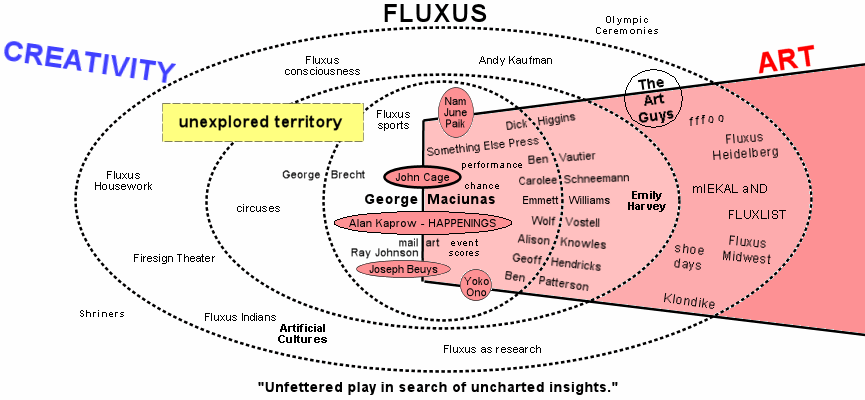
I was down in Chicago for the MLA convention and visited the Art Institute of Chicago. Besides the spectacular collection, they had a small display of materials related to Fluxus – a conceptual art group of the 1960s that is still going (depending on who you believe.) Fluxus was influenced by John Cage and included artists like Joseph Beuys, Yoko Ono, and Nam June Pack. Fluxus believed in “intermedia” – the confrontation of media. The Wikipedia entry summarizes their philosophy:
- Fluxus is an attitude. It is not a movement or a style.
- Fluxus is intermedia. Fluxus creators like to see what happens when different media intersect. They use found & everyday objects, sounds, images, and texts to create new combinations of objects, sounds, images, and texts.
- Fluxus works are simple. The art is small, the texts are short, and the performances are brief.
- Fluxus is fun. Humour has always been an important element in Fluxus.
I picked up a strange book by a Fluxus poet, Emmet Williams, A Flexible History of Fluxus Facts & Fictions that contains digitally remastered kunstfibels or art inventions. It is a inventive history of Fluxus that is itself annotated art, but also, as Williams explains, a primer (another sense of “fibel”.) For a contemporary sense of Fluxus see the Fluxus Portal from which the diagram above comes. Diagramming their history and influences is one feature of the exhibit that attracted me. Fluxus founder Macunias was diagramming the flow of their history back in 1966. See Visualising Art History.